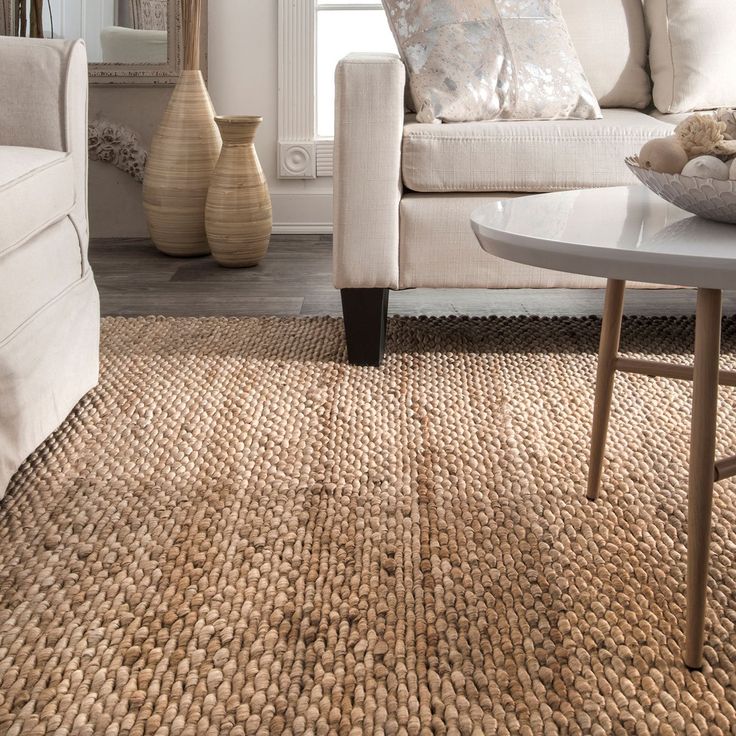If you’re thinking about revamping your room, swapping your old rug for a new one can truly transform your space. You can change the overall look and feel of the room by infusing some fresh vibes. But now comes the crucial part – choosing the right rug. How to be confident in your choice?
One thing that can help you be confident in your final decision is to learn the differences between woven and non-woven rugs. Whether you choose to buy a woven rug or a non-woven, ensure that the rug aligns with your aesthetic preferences and practical needs.
Differences Between Woven and Non-Woven Rugs

To many people woven and non-woven rugs may look the same at first glance. One specific characteristic of woven rugs that distinguishes them from other rugs is their intricate patterns. They often boast rich texture and vibrant aesthetics, and each rug represents an original work of art. Each woven rug is truly a masterpiece, unique to each artisan.
Non-woven rugs, on the other hand, have a more uniform look and are a somewhat cheaper alternative to their woven counterparts. They make an ideal choice for people on a tight budget and come in a wide range of styles and designs.
If you want to know which type of rug is better, there is no one better than the other. It all depends on your practical needs and which aesthetic you prefer more. That’s why is good to inform yourself about the characteristics of each rug to see what works better for you.
Woven Rugs

How Are They Made
The first and biggest difference between woven and non-woven rugs is the way they are produced. The craftsmanship of woven rugs is a meticulous process. They are made by interlacing yarns or fibres on a loom, which helps to create a structured and durable textile.
The person who makes the woven textile uses the loom to hold the wrap threads in place while they interlace the weft threads of varying colours, according to the predetermined pattern of the rug. The result is a stunning creation consisting of meticulously detailed woven textures.
Woven rugs can be made either manually, or hand-woven and with the help of a machine. Handwoven rugs are the ultimate craftsmanship made by the hands of skilled artisans and are highly prised for their intricate designs and exceptional quality.
Machine-woven rugs are produced with efficiency and consistency throughout the entire process and they are more affordable than hand-woven rugs.
When it comes to the materials used in the production, these stylish pieces of textile are made from natural fabrics such as wool, cotton, jute, hemp, silk or a blend of synthetic fibres and natural fabrics.
Types of Woven Rugs
Woven rugs can be flat or made with raised piles for depth and dimension.
Flat weave rugs feature a flat and smooth texture produced without piles. As such, they are thinner and more lightweight compared to non-flat rugs. Due to their flat construction, flat-woven rugs are reversible, meaning, they don’t have a distinctive back side. You can flip the rug and use either side as you please.
Non-flat woven textiles, on the other hand, boast a raised surface and texture that adds depth and dimension to the rug. They deliver a plush and luxurious feel under the feet and are valued for their intricate designs and quality.
Pros and Cons
Pros:
- Highly Durable
- Versatile and Aesthetically Pleasing
- Timeless Appeal
- Suitable for High-Trafic Areas
- Unique and Ornate Designs
Cons:
- Expensive, especially hand-made rugs
- Require Higher Maintenance
- Heavy and Thick – a bit difficult to manoeuvre
Regardless of their drawbacks, for many homeowners, the positive sides outweigh the negative aspects of woven rugs. They remain a highly favoured rug choice for households across the world.
Non-Woven Rugs

How Are They Made
Non-woven rugs go through a somewhat simpler process that involves a combination of mechanical, thermal or chemical processes to help bond fibres together. By doing so, manufacturers are able to produce a cohesive fabric in a range of styles and textures.
These types of rugs can be used as indoor rugs, outdoor mats and beyond. They are more lightweight and affordable than their woven counterparts and easier to maintain.
They are typically made from synthetic materials such as polyester, nylon, acrylic, olefin or a blend of synthetics. Polyester rugs are highly valued for their exceptional durability, which makes them also an ideal choice for decorating patios and other outdoor areas.
Polypropylene, also known as olefin, on the other hand, is a synthetic that is resistant to moisture, stains and mildew. This is another great choice for areas prone to higher moisture such as kitchens, bathrooms or outdoor spaces.
Types of Non-Woven Rugs
Based on the method of production, there are bonded rugs, needle-punched rugs, flocked rugs, tufted rugs and spun-bonded rugs. Each type has its own unique characteristics which makes them suitable for various environments.
Whether you decide to use them as a soft and plush indoor rug, or to decorate your patio and outside space, they indeed make a suitable and versatile choice.
Pros and Cons
Pros:
- Affordable
- Wide selection of Various Styles and Designs
- Resistant to Wear and Tear and Some Suitable for Outdoor Areas
- Easy to Clean
- Lightweight, easier to manoeuvre
Cons:
- Not as Rich in Texture as Their Woven Counterparts
- Less Eco-Friendly
- Less Durable than Woven Rugs
As already said, there is no right or wrong choice. One is not better than the other. Identify your needs and decide where you want to use the rug. Learn the differences to help you make an informed decision to choose the suitable rug for your home.
